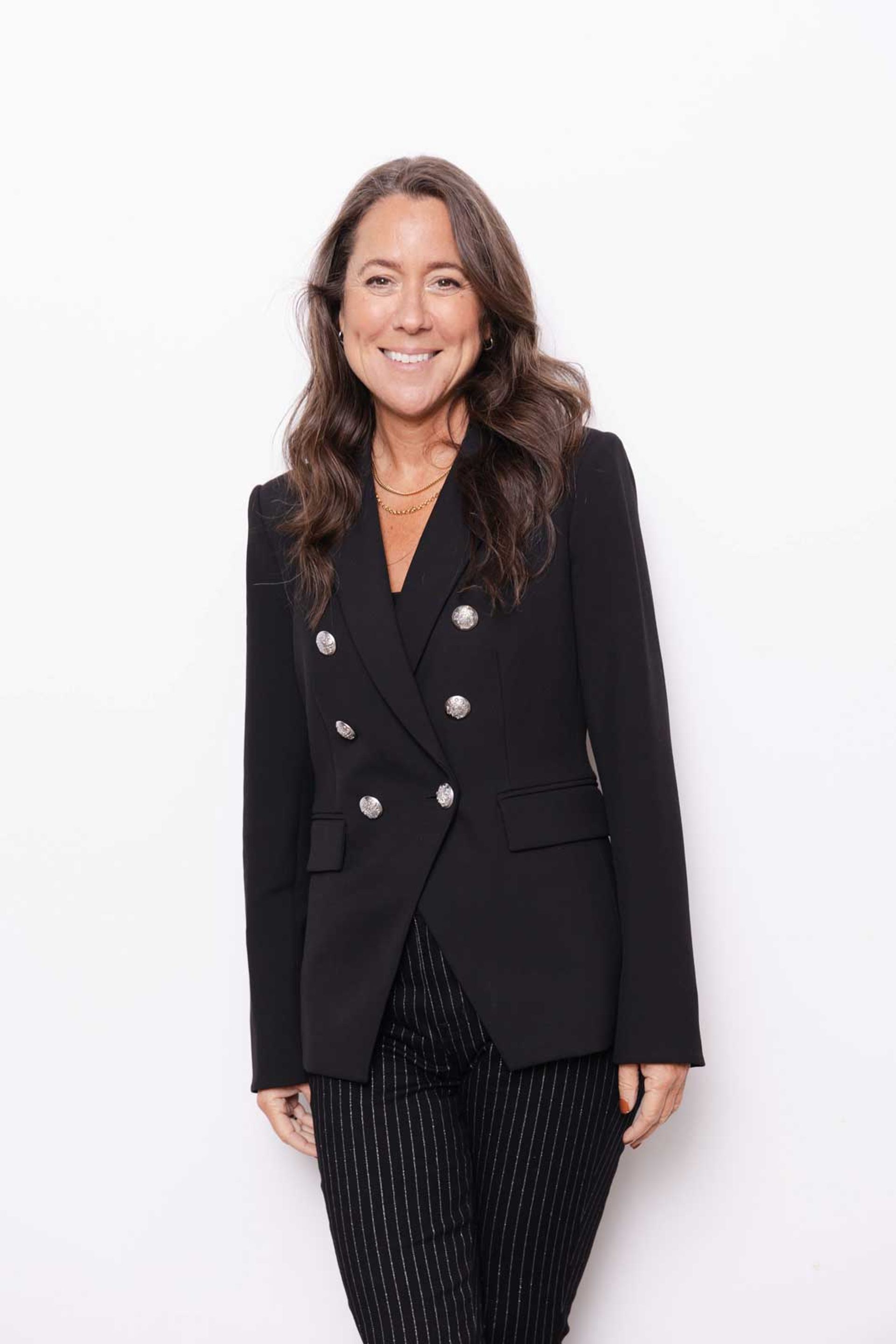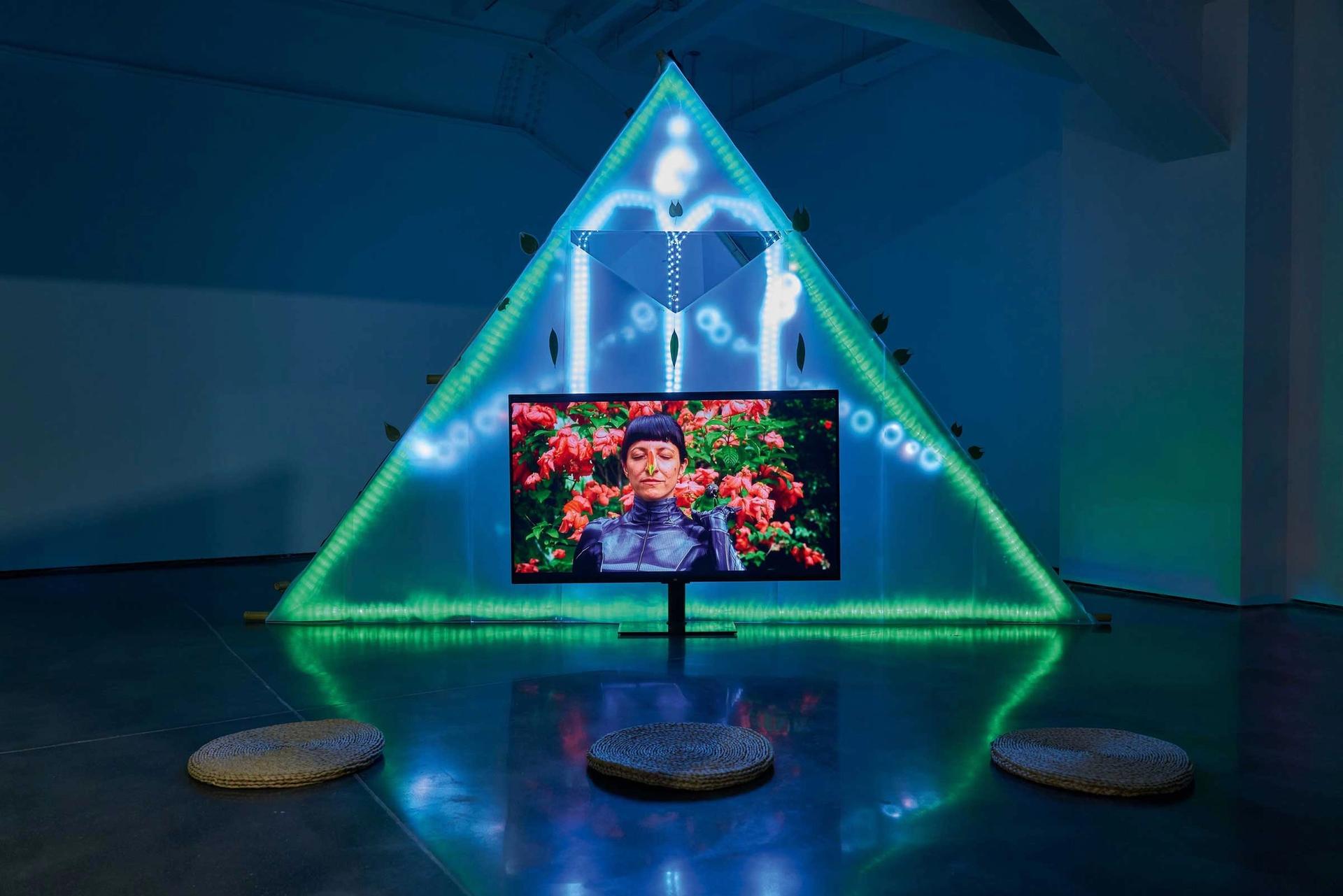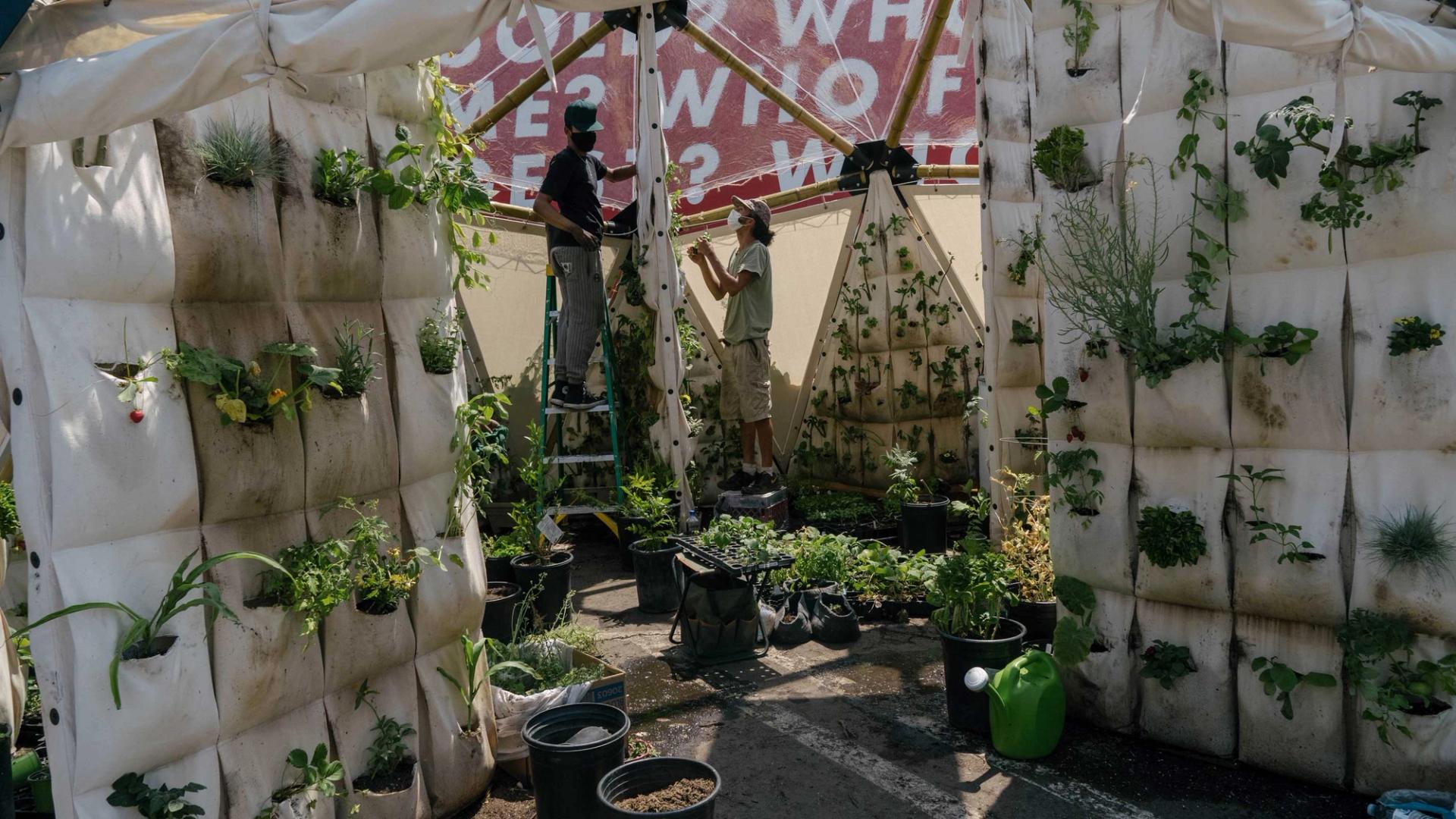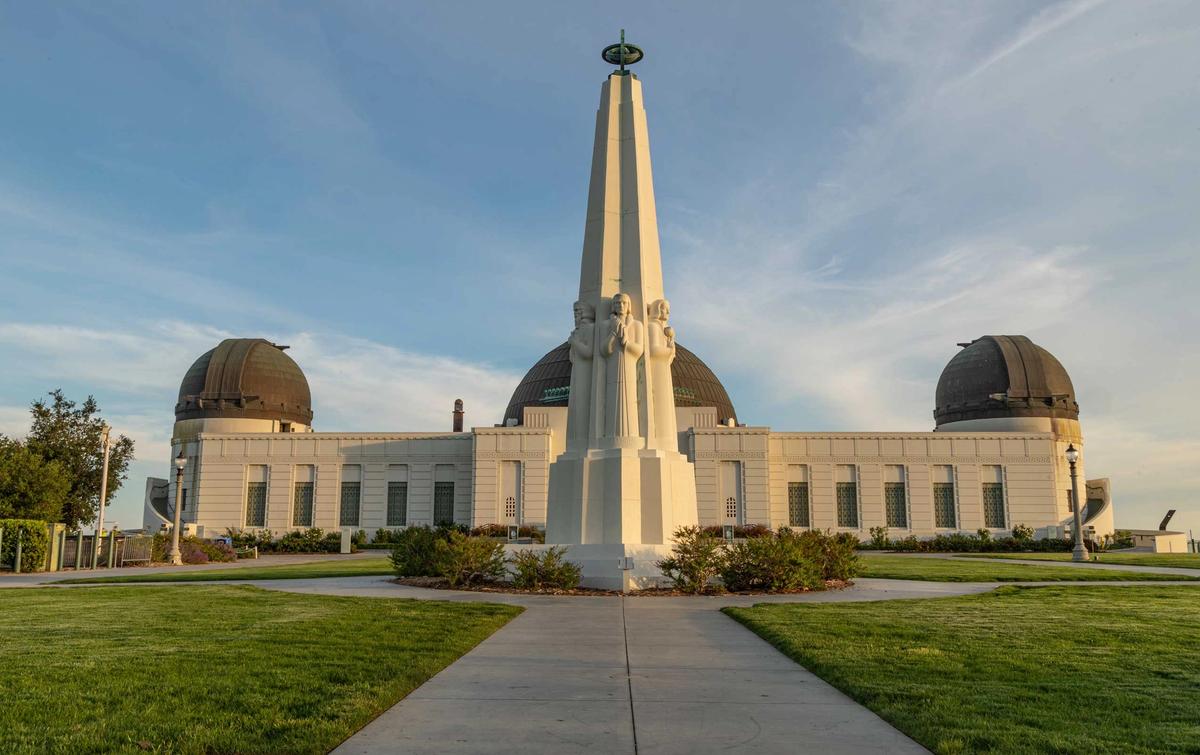While Southern California may be known for sun and cinema, Los Angeles is increasingly staking its claim as one of the world’s visual art hotspots. Part of that comes from its burgeoning art economy—the proliferation of artists, art and design schools, art fairs, museums and galleries—and part from PST Art, a project the Getty publicly launched in 2011.
Joan Weinstein, who has worked on the PST Art project—originally titled Pacific Standard Time—since the start, says it was originally conceived as a research initiative, “to rescue archives related to the history of Los Angeles art in the post-war era”. But the project then got bigger—“when we saw what was in those archives,” she adds, “we realised that they would rewrite the history not just of Los Angeles art but of Modern art in general”.
And bigger. “Dozens of art institutions wanted to join along the way,” says Weinstein, who is now director of the Getty Foundation, the funding arm of the Getty Trust. “In the process, it has become the largest collaboration of arts institutions in the United States that we know of. The other thing that really makes it distinct is Getty funding—it empowers curators to think big and gives them the resources to assemble dream teams to work with.”
The art and the science/tech worlds are grappling with the same problems and big issues
Katherine E. Fleming, president and chief executive of the Getty Trust

Katherine E. Fleming
© Julie Skarratt Photography
The subtitle of the first edition was Art in LA, 1945-1980 (2011-12) and it focused on the region’s artists and the art movements they created. Presenting more than 70 exhibitions and programmes, as well as many related publications, it helped establish California as a key location in contemporary American art history, challenging the conventional New York-centric narrative. The second edition of PST Art was LA/LA (2017-18), which looked at the cultural interconnectedness of Latin America and Los Angeles.

Patricia Domínguez’s Matrix Vegetal (2021/22) will be at Molaa
© Patricia Domínguez
PST Art has had such national impact that when Katherine E. Fleming landed the job of president and chief executive of the Getty Trust in 2022 she thought it needed to become a regular, five-yearly event. “I would like it to be an anchor of the organisation’s programming,” she says. “We view it as a major commitment to the Southern California art scene.”
The third edition of PST Art will soon be on us, under the umbrella title of Art & Science Collide. It launches in September and will include more than 70 exhibitions and programmes, mostly in Los Angeles but also stretching out from Santa Barbara to San Diego. The projects focus on a broad and diverse intersection of art and science, and will cover the cosmos, ecology and the environment, film and entertainment, representation, and the future.
While the overall theme was chosen before Fleming arrived, she understands the selection. “The Los Angeles area has become an astonishing engine for science and innovation,” she says. “And as we’ve seen in the projects coming in, it’s really remarkable the extent to which the art world and the science/tech world are grappling with the same problems and the same big questions from very different angles, but both in a very creative way.”
Participants include large museums such as the Broad, the Hammer Museum, the Huntington and the Los Angeles County Museum of Art (Lacma); community arts organisations such as Crenshaw Dairy Mart and Self Help Graphics & Art; and libraries and archives such as the UCLA Film & Television Archive and the ONE Archives at the USC Libraries. Science organisations involved include Caltech, Nasa’s Jet Propulsion Laboratory and the Griffith Observatory. In the first round of funding, these bodies won Getty grants for research and planning, and have now moved into the implementation stage. Getty support totals $19m, although Weinstein adds that “the final amount will be well over $20m”.
The Getty itself will be presenting several exhibitions, the largest of which is Lumen: The Art and Science of Light (10 September-8 December). Using sacred objects and scientific instruments it investigates how Christian, Jewish and Muslim theologians during the Long Middle Ages (800-1600) explored the phenomena of light, vision and the movement of the heavens. Sensing the Future: Experiments in Art and Technology (E.A.T.) (10-September-23 February), looks at the collaboration between two Bell Telephone Laboratories engineers and the artists Robert Rauschenberg and Robert Whitman. Their events in the 1960s and 70s brought together art, theatre and groundbreaking technology.
A few exhibitions will be very large—indeed, cosmic. Lacma’s ambitious Mapping the Infinite: Cosmologies Across Cultures (13 October-23 February 2025) will display objects from the Stone Age to the present day that attempt to explain the universe and our place in it.
Many more will be medium-sized and even grassroots in scale, such as Crenshaw Dairy Mart’s abolitionist pod, a permanent installation at the Hilda L. Solis Care First Village. It is a self-sustaining community garden consisting of a series of plant-filled geodesic domes, which also became sites for the community and art programming during the Covid-19 pandemic.

Crenshaw Dairy Mart has created geodesic domes filled with food plants from local Black gardeners
Courtesy of Crenshaw Dairy Mart
“Our exhibition is a study of our last three years researching and building these pods,” says alexandre ali reza dorriz, one of Dairy Mart’s co-founders; it ties together issues such as “the Black liberation movement and food justice”. Crenshaw Dairy Mart is one of several organisations that are first-time PST Art participants.
The Griffith Observatory, which sits on a slope of Mount Hollywood overlooking Los Angeles, is another first-timer. “I was invited over to the Getty to one of their early exploratory meetings,” says Ed Krupp, director of the observatory, “and someone asked, well, what is the observatory going to do?” The observatory is now working on a 30-minute animated film that explores a topic parallel to Lacma’s exhibition: how we have envisioned the cosmos, across cultures and through time.
Many of the PST Art participants stress the collaborative spirit and sense of shared purpose and community engendered by the programme. “There’s no other city in the world where all of the museums come together like this to create an impact that is so far beyond what any single institution could accomplish,” says Ann Philbin, director of the Hammer Museum, which is showing around 35 works focused on climate change in Breath(e): Toward Climate and Social Justice (15 September-
5 January 2025).
She adds: “Our first PST Art exhibition, Now Dig This!, presented the works of Black artists in Los Angeles from the 1960s to the 80s. It changed the trajectories of many of their careers and travelled to MoMA PS1, where works by a dozen artists entered MoMA’s collection for the first time. Radical Women [for the second edition of PST Art] offered visibility to more than 100 Latina artists, most of whom were entirely unknown outside of their home countries. Those are examples of how art history is being shaped and altered in real time by PST Art exhibitions.”
Krupp agrees. “It is astonishing and stunning that Getty is doing this. I mean, it is leadership, it is money, it is inspiration and it is continuity. It’s a great gift for Los Angeles, and honestly for the whole world.”
Key dates
PST Art: Art & Science Collide opens on 14 September and runs until 16 February 2025. As well as more than 50 exhibitions, there will be regular PST Art Weekends held in different locales around Los Angeles, with events and performances. Partner institutions will also host their own public programmes.

PST hosts include Luckman
© Stephen Busken, Courtesy of Luckman Fine Arts Complex
In November, Getty has partnered with Edinburgh Science for the PST Art x Science Family Festival. The free, three-day event will include hands-on workshops, music and food, and is aimed at children up to the age of 14 and their families.
For the full programme see pst.art
14-15 September
Opening weekend
5-6 October
PST Art Weekend: North-east LA
19-20 October
PST Art Weekend: Westside
2-3 November
PST Art Weekend: Orange County and South Bay
9-11 November
PST Art x Science Family Festival
16-17 November
PST Art Weekend: Mid-City
23-24 November
PST Art Weekend: San Diego and La Jolla
7-8 December
PST Art Weekend: Downtown LA
February 2025
PST Art Ideas Festival
15-16 February
Closing weekend
PST Art: Art & Science Collide opens in September 2024. Read all our preview coverage here



